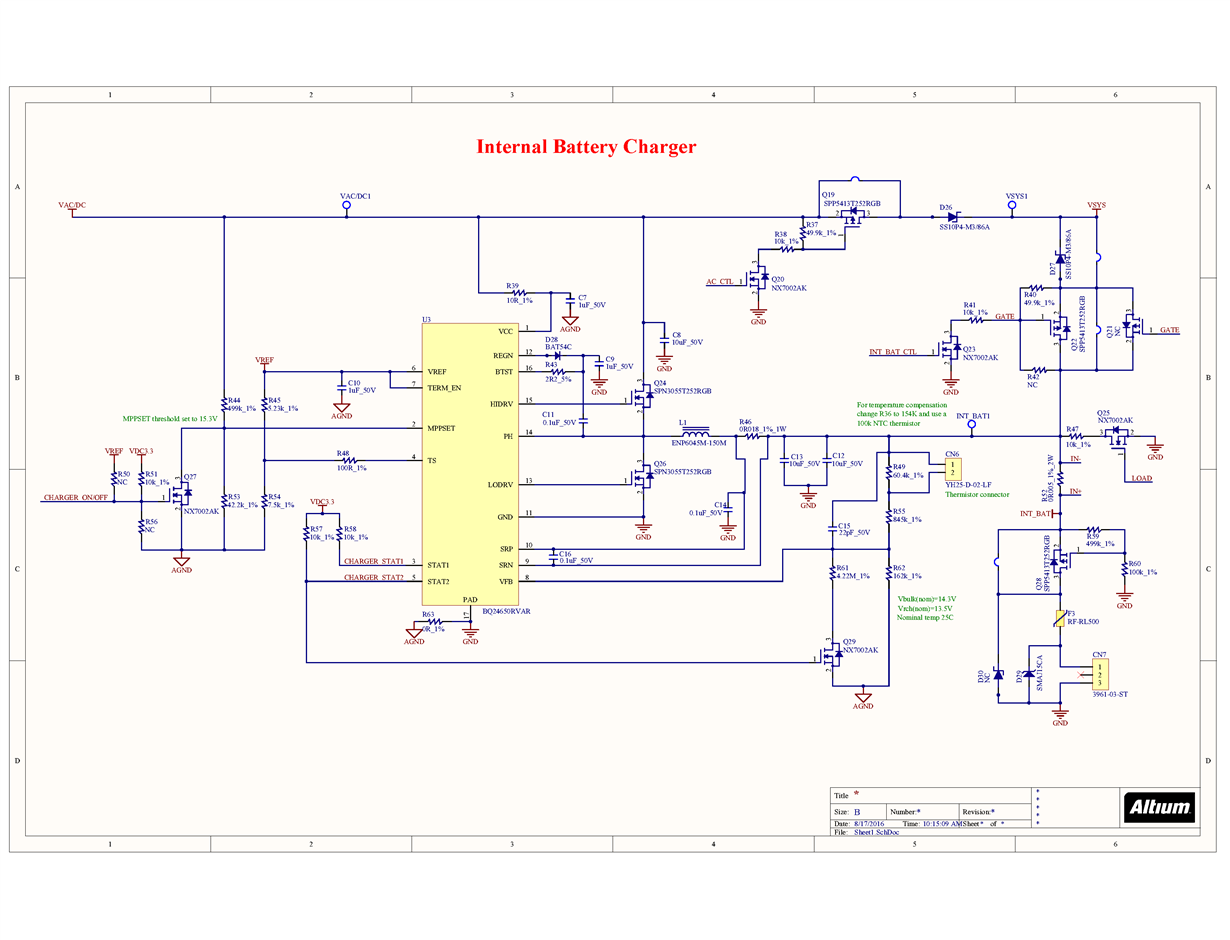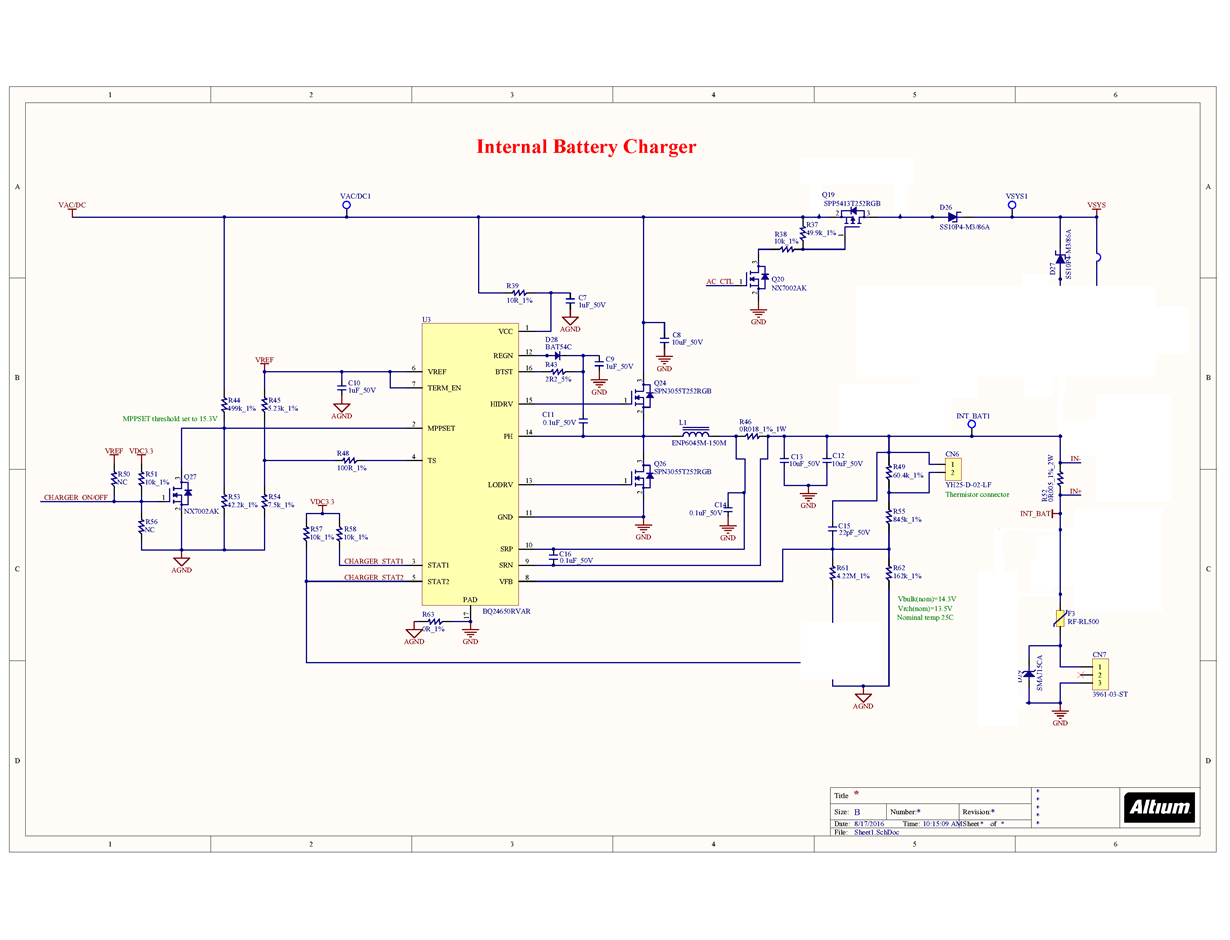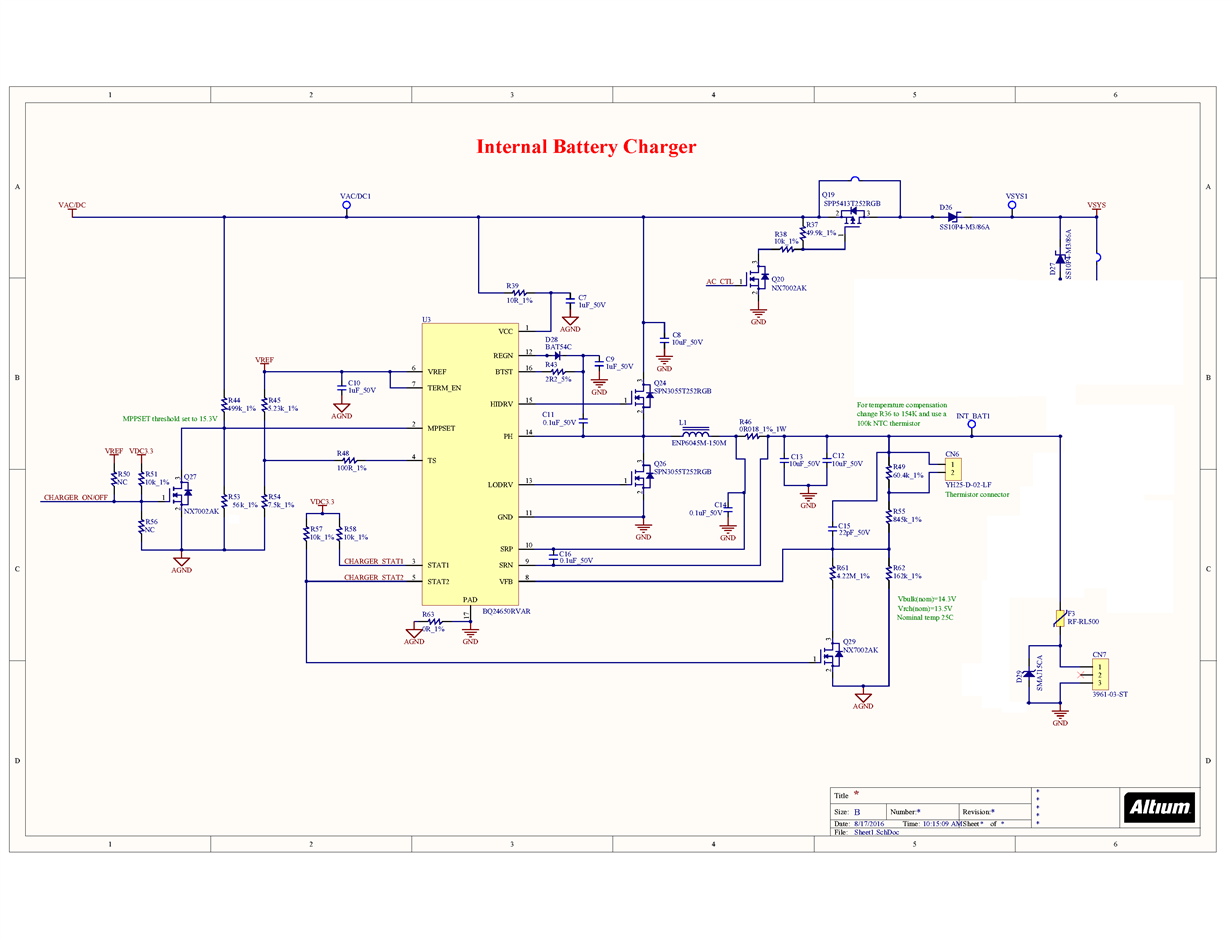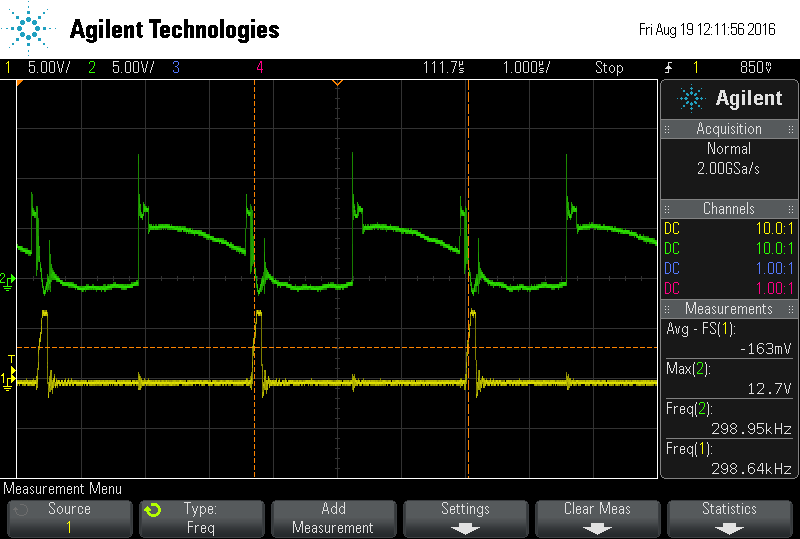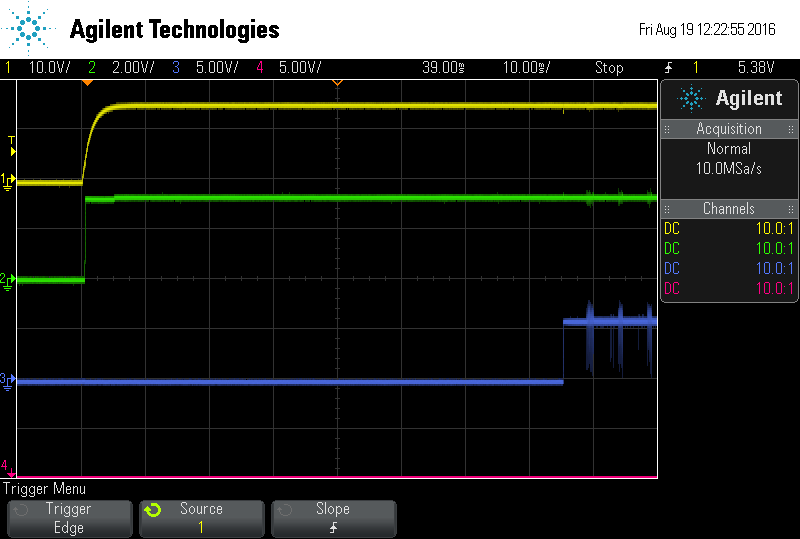Hi,
I implemented a lead acid battery charger using the BQ24650 as explain in the application note slva437a, testing the board I made it seems the charger should be working but I measure no current flowing into the battery. Let me explain, we have and MCU connected to the BQ24650 detecting the STAT1 and STAT2 pin, we are detecting the STAT1 at 0V and STAT2 at 3.3V which means the STAT1 transistor is ON and the STAT2 transistor is OFF.
According to the data sheet this means CHARGE IN PROGRESS, this is expected since the TS pin is at 1.95V, MPPSET is at 1.27V and VFB is at 1.56V. This means the charger should be at pre-charge. Since our current sense resistor is 18mOhm, the pre-charge current should be set to 220mA but I am measuring 0A.
If I turn OFF the charger IC, by setting MPPSET pin to 0V, the STAT1 and STAST2 both return OFF which is the expected result. Turning the charger ON again give the same result, CHARGE IN PROGRESS but no charge current.
What could be the problem?
Regards
Mark


